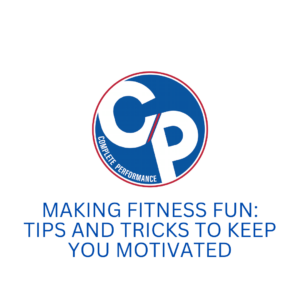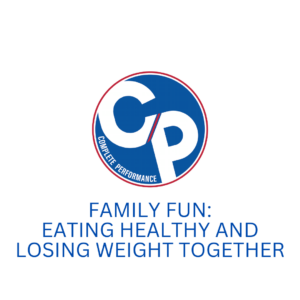What does EVERY OTHER state have 4 of, but Minnesota only has 2?
SEASONS!
Why is it that every other state has winter, spring, summer, and fall, but Minnesota only seems to have a humid and muggy summer and an endless, snowy winter??
But did you know that the 2 Minnesota seasons have more in common with the average American’s diet?
The average American only has 2 diet seasons as well!
Think about it – what does your dieting history look like? Or anyone’s you know?
ALL IN Diet – No cheat meals, counting calories and macros, and giving up every food and drink you’ve ever loved.
Binge Mode – Eat anything and everything in sight and quantity plays NO factor.
And you wonder why so many of us struggle with our weight and body image?
Here’s the thing though, if you live in those 2 seasons and never properly periodize your nutrition, you’ll NEVER achieve or sustain your body composition goals.
Anyone who has successfully lost (and maintained) a significant weight loss followed a nutritional periodization plan.
Well, are you intrigued?
First, we need to define nutritional periodization.
Nutritional Periodization means you divide a time frame into blocks, wherein each block is focused on a different adaptation, goal, or outcome. However, all blocks are designed to work together to push you towards one specific goal at the end of the time period.
What this might look like for you is this:
- A 3-4 Week Calorie Deficit leading into Thanksgiving to push fat loss.
- A 2-4 Day Diet Break over Thanksgiving for adherence, sanity, and enjoyment.
- A 3-4 Week Calorie Deficit leading into Christmas Eve/Christmas to push for fat loss.
- A 2-Day Refeed over Christmas Eve and Christmas for adherence, sanity, and enjoyment.
- A 5-Day Calorie Deficit leading to New Year’s Eve.
- A Refeed Day to ring in the New Year!
As we work through this comprehensive guide, my goal is that you understand and apply these concepts to help you successfully reach your body composition and training goals.
Today I want to explain to you the first phase of nutritional periodization.
Primer Phase
Do you know what one of the most common dieting mistakes is? The one almost EVERYONE makes?
It’s jumping right into a fat loss phase.
Look, I get it – you start a new plan and expect to see results FAST, but let me ask you this…
Would you rather lose fat for a little bit, get stuck, frustrated, and end up putting that (and then some) back on?
Or would you rather lose that weight and keep it off for good?
The answer is simple! It’s a no brainer.
But, I can almost guarantee you’ll wake up ready to commit to losing fat and getting lean and you’ll forget all about that…
That’s why ALL of my clients go through something called a Primer Phase, which is actually becoming a much more popular thing around the coaching space these days.
This phase IS NOT about losing body fat, and if I’m being truly honest, you might maintain or even gain a couple of pounds.
However, this is the stage that sets you up for MAJOR success because it’s here where we put a major focus on the behavioral and psychological changes that need to happen in order to go through a fat loss phase.
Here are 7 things my clients and I take away from a Primer Phase.
#1 Discovering Maintenance Calories
How do we know the appropriate deficit without knowing your maintenance calories?
“What about those equations on the internet or in MyFitnessPal?”
Sure, that can give us an idea of where to start, but TRUE maintenance calories is discovered when we KNOW the amount of food you can eat while maintaining your current body composition.
This helps prepare your body to into a fat loss phase eating as many food and calories as possible before dipping into a calorie deficit.
As a coach, this is a great opportunity for me to take a look into your current dietary habits, so I can identify some areas of focus as we move into the fat loss phase.
#2 Finding a Diet You Can Stick To
You are UNIQUE!
And while that’s something to be celebrated, it means you and I don’t yet have the perfect diet structure for you.
One of the biggest keys to successful and sustainable fat loss comes through individualization. During the Primer Phase, you’ll be asked to fill out a questionnaire and do a thorough evaluation of your preferences so that we can start crafting your perfect plan.
Here are the major areas of focus:
- Lifestyle (Job, Social, Training, Etc.)
- Training Style & Frequency
- Dieting History
- Food Preferences, Intolerances, and Necessities
- Personality Type
- Goals & Desired Rate of Progress
- Stress (Job, Relational, Social, Financial, Etc.)
- Current Biofeedback
- Motivation Levels
- Day-to-Day Activity Levels
Non-Negotiables
#3 Understanding Food Quality & Appropriate Food Choices
This is a HUGE secret for long-term success.
If you can rebuild your relationship with food so you better understand food quality, appetite, and desires you will have little issues maintaining your success.
It makes it SO HARD to overeat highly processed junk food if you know how to LISTEN to your body! You’ll find yourself with less cravings, fewer false hunger cues (these come as a result of fatigue, stress, distraction, etc.), and hidden calories.
During this phase, we work on swapping out some lower quality food items for higher quality, more satiating options. Together we work to restructure your meals, so they’re built around lean proteins and fibrous carbs.
#4 Learn How to Track Accurately
How accurate are you with tracking your food?
To be honest, most of us are downright AWFUL at estimating what we really eat in a day. Our eyes magnify the “GOOD” foods and shrink the “BAD” foods.
When I start working with clients, so many find hundreds or thousands of hidden calories in their day because they had previously been estimating calories.
Now, you’re serious about losing body fat, so it’s not to say that you’re being deceptive or purposefully lying to yourself, it’s just that you haven’t been taught how to accurately track your food intake yet.
As a coach, I like to use this stage to sift through MyFitnessPal, Google Trackers, or food journals to help identify where inaccuracies are slipping in.
#5 Daily Movement and Activity
The Primer Phase isn’t all about food…
In fact, I take a look at the training and day-to-day activity levels of all new clients whether or not they’re working with me on training.
Why?
Because the biggest difference between lean and overweight individuals lies in their non-exercise activity thermogenesis (NEAT).
NEAT is defined as the energy expended for every thing we do that is not sleeping, eating, or training. This is exercise from working, typing, fidgeting, yardwork, and even cleaning!
Researchers have found there to be a MAJOR variation from one person to the next, so it’s important each individual is viewed separately.
One of the biggest problems that arises when entering a fat loss phase is the subconscious decrease in NEAT. This is your body’s method for conserving energy, and it results in you burning fewer calories.
As this is such an issue, I encourage every client to set a daily movement goal so we’re doing what we can to maintain NEAT as high as possible.
#6 Diet Education – Body & Mind
If I’m being honest, the biggest reasons I like to coach is because I like to teach. I love taking the science and information on diets and fat loss that’s out there and sharing it with others, so I totally GEEK OUT during the Primer Phase.
The Primer Phase is a great time for education on what it takes physically and mentally to lose body fat; therefore, clients are prepared for any challenges or temporary setbacks that lie ahead.
Sure, this is a time for me to teach you about calories, macros, and everything nutrition, but more importantly it’s a time to teach you how to focus on CONSISTENCY. Throughout this journey you’re going to hit plenty of speed bumps, but the important part is to focus on the process, which will lead you to the desired outcomes.
#7 Diet Recovery
Last but not least – Diet Recovery.
This one confuses everyone.
Everyone comes in thinking he or she needs a diet NOW, but one of the biggest reasons we need a Primer Phase is to recover from your previous diet.
Whether you were cutting calories or eating whatever, whenever your body needs some time to return to normal in these areas:
- Hormones (Testosterone, Cortisol, Thyroid Hormones, Hunger Hormones, Etc.)
- Gut Cleansing & Repair
- Immune System
- Muscles
- Brain & Mindset
Unfortunately, these things don’t repair overnight…
And the harsher and longer your previous diet, the longer you’ll need to spend in the Primer Phase to fully restore your body.
Now, you’re probably wondering just how long this takes because you signed up for results and you’re not interested in waiting another few years to get them.
Well, it depends.
The length of the Primer Phase is 100% unique to the individual.
If you’re all in with minimal stressors or distractions, we might whip through this phase in 3 weeks; however, it’s more realistic to complete the Primer Phase in 6 weeks.
To give you an idea of what this looks like as one of my clients, here are the 3 phases in the Primer Phase:
- Food Quality
- Stress Management
- Activity Levels
Each individual phase has it’s unique focus as we work you back to maintenance calories and find the appropriate diet structure for you!
About The Author

Jordan Davies is the Co-Owner of Complete Performance. Jordan has her B.S. in Exercise Science and Psychology, and her M.A. in Holistic Health Studies. She is a CSCS certified strength and conditioning coach, and a PN-1 and NCI-1 certified nutrition coach. She loves to study how the human body needs to be moved and nourished and making that fit to your unique lifestyle. ,Click Here Now to Apply for Coaching with Jordan.




